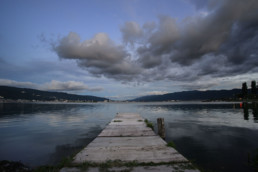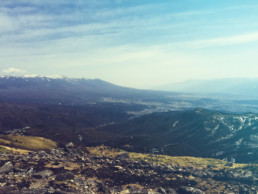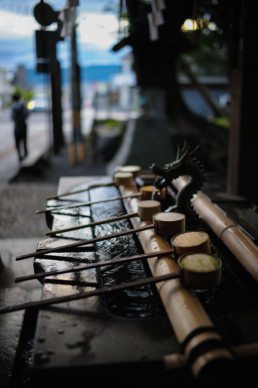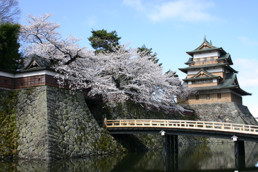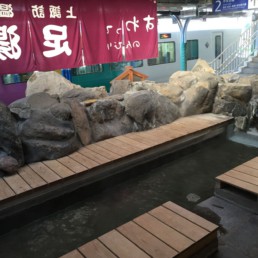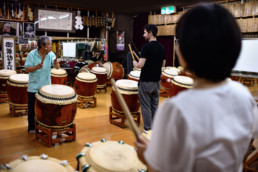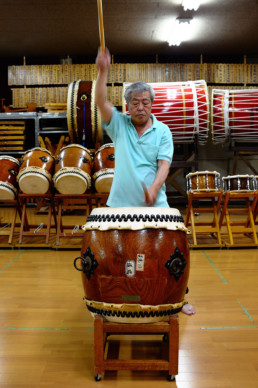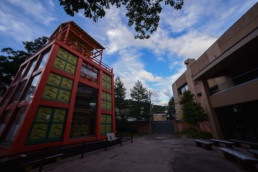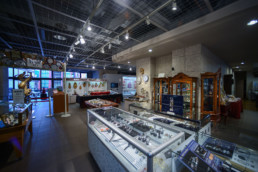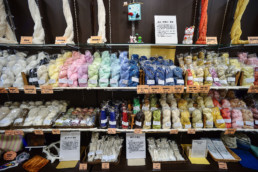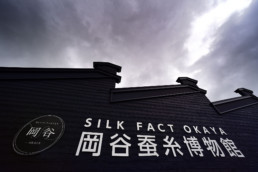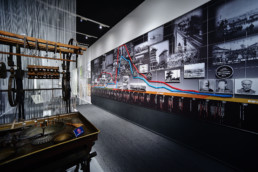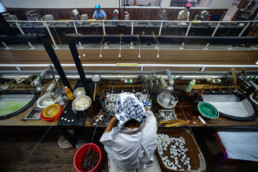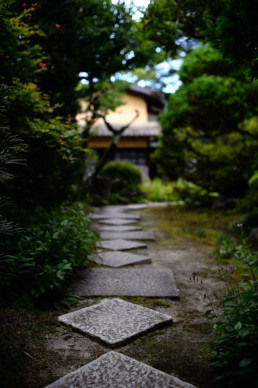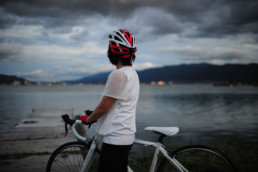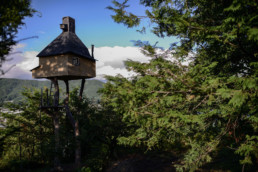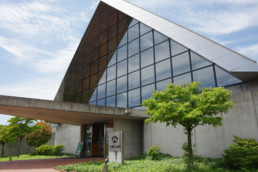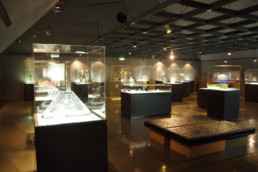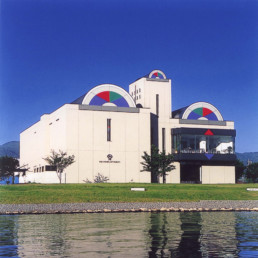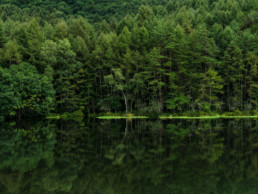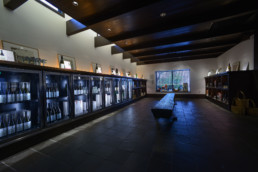Overview
Suwa City has too many activities and destinations to list comprehensively, so the following is a compilation of things to do (in no particular order) that should appeal to most travelers.
Lake Suwa
The lake is located in the heart of Suwa and is the largest lake in Nagano Prefecture. Whether walking, cycling, or jogging, the lake provides a relaxing backdrop. In spring, the lake is surrounded by beautiful cherry blossoms, while summer sees it lit up by fireworks above. In warmer months, lake activities include pleasure cruises, amphibious bus tours, fishing, and more.
In winter, Lake Suwa is home to an extraordinary, naturally occurring event known as “The God’s Crossing.” Beneath Lake Suwa are warm hot spring waters that remain unfrozen during the winter months, causing pressurized ice formations to form above the lake.
Venus Line
The Venus Line is a sightseeing route to the east of Suwa Lake the reaches up into the highland areas, passing numerous destinations. There are beautiful resorts and a ropeway that offers magnificent views of the lake.
The highland areas near Mount Kurumayama and Mount Washigamine are spacious, offering incredible mountain views of Mount Fuji as well as the surrounding Northern, Southern and Central Alps. A visit to the Kirigamine Nature Conservation Center will provide information on walking trails as well as the local plants and wildlife. The marshland hiking paths around national treasure spots Yashimagahara Wetland and Ikenokurumi Wetland are a great way to get active outdoors.
The large, open areas are the perfect place to launch man-made glider planes, which can often be viewed in flight. To learn more about the planes check out the Glider Fureai Center.
There are cattle-grazing areas as well as several natural vegetable farms that offer fresh produce with a distinctive sweetness thanks to the elevation and weather conditions.
Spring and summer are the best times for flower viewing.
The winter snows provide a chance for plenty of fun at the Kirigamine Family Ski Resort. These gentle slopes are perfect for the family, and the nearby cross-country courses are often used by Olympians as the high elevation provides excellent training grounds.
Suwa Taisha Shrine
Suwa Taisha, or Suwa Grand Shrine, is of Shinto origin and is one of the oldest shrines in Japan. The shrine areas are surrounded by thick trees and landscaped gardens and are easily accessible by walking or cycling. There are four building complexes, including the Maemiya (old or front shrine), Honmiya (main shrine), Harumiya (spring shrine), and the Akimiya (fall shrine). Suwa Taisha is the head shrine for a network of over 10,000 related Suwa shrines nationwide.
Takashima Castle
Takashima Castle was built in 1592 and is the highest elevated castle ever constructed in Japan. Known as the “Floating Castle,” Takashima was built on a small island in Lake Suwa that was connected to the shore by only a single strip of land. Today, the lake shore no longer reaches the sides of the castle, but the gardens and moat still exist. The Suwa clan ruled the area around Lake Suwa from this stronghold until 1869. In the 1870s, the castle was dismantled by order of the Meiji government, but has since been restored to its original form. The castle is best viewed and photographed in the morning, and there are English materials available for tourists. It’s open from 9:00 to 16:30 (17:30 from April to September). The first and second floors serve as a museum, and the third floor is an observation deck with nice views of the surrounding area.
Footbaths
The footbaths of Suwa are an interesting way to experience Japanese hot springs in a public setting. They can be found throughout Suwa in various areas. The Lakeside Park Footbath is an outdoor bath with lake views. It is located near the “Natural Bath Walkway,” where inset stones provide reflexology massage for your feet. Kami-Suwa Station even has footbaths on the train platforms – this is one time when waiting for a train is a good thing! The Jingu-ji Temple near Suwa Taisha is also home to a popular footbath.
Taiko Drums (Osuwa Daiko)
Osuwa Daiko is a traditional Japanese drum center that incorporates a factory, museum, and exhibition area for displaying and practicing percussion instruments. On the first floor is the factory, where visitors can often find workers standing on top of the drums to create the wooden frames by stretching skins. In the lower area, there is a large room with hundreds of drums of all sizes on display. Visitors can arrange a practice session and receive some basic training on the massive drums for some exercise and fun all rolled into one. The famous drum troupe from Suwa has traveled the world and, on the second floor, there is a museum that exhibits not only drums and artwork, but also a collection of gifts they have received from a large variety of countries. Some souvenirs (including drums of course) are also on display on the first floor.
Gishodo Suwako Watch and Clock Museum
Gishodo is a special museum for fans of timepieces and wall clocks. On the first floor is a large souvenir and watch shop, where various novelty items and modern watches can be purchased. The museum features a large exhibition room where visitors can learn about the history and ingenuity of Japanese watchmaking while viewing a collection of more than 400 watches and clocks from the Edo Period (1603-1868) to today. Upstairs is an activity area, with several interactive displays, and there are watch- and clock-making experiences available that involve visitors creating their own timepiece with guidance from staff. Outside the museum is an enormous water-driven clock tower known as Suiun-Gishodai, or the Astronomical Clock Tower in English. The clock tower is a restoration of a clock tower created the year 1092 in China’s Kaifeng, a prominent city of the Northern Sung Dynasty. The tower is powered by water wheels and chimes in different patterns with coordinated doll movements at regular intervals. The clock tower also shows the location and tracks stars with a telescope. Seating is provided nearby for those who wish to listen and watch.
Okaya Silk Museum
Suwa is closely tied to the silk industry; the neighboring city of Okaya was once Japan’s largest manufacturer and exporter of silks. The modern museum and factory in Okaya serves as a great introduction to the silk world. Its displays feature more than 30,000 artifacts, including silk-reeling machines, fabrics, and beautiful kimono. Many of the reeling machines are still running and you can see silk workers creating silk right in front of you. The nearby gift shop offers items for sale and the Cocoon Craft Room gives visitors a chance to make silk-themed souvenirs. English- and Japanese-language guide materials are available upon request.
Honjin Iwanamike (Old Samurai House)
This beautifully preserved landmark was once high-class accommodation for royalty and key leaders across Japan. Its architecture is fundamentally Kyoto-style, with some key differences in structure, interior design, and roofing that are unique to the region. As the house was made for VIPs, there are escape rooms and hatches built-in to protect them from possible attack. The back room is an open tatami seating area that faces one of the most beautifully sculpted gardens in the region. The scene provides an excellent photographic opportunity during all four seasons and a nice place to sit and relax for a few minutes between your travels.
Lakeside Park (Kohan Park)
Kohan Park runs along the east coast of Lake Suwa and is a natural rest and relaxation area. From the park’s docks, visitors can get out onto the lake or do some fishing. The spacious grass area is an excellent place to have a picnic or unwind. The park is one of the best locations for viewing the summer fireworks festivals and the ice formations in winter.
Takasugi-an (High Room)
Celebrated by Time as one of the 10 most dangerous dwellings in the world, this is one of the strangest sites you will ever see. It was constructed more than 10 meters in the air, precariously placed on a few tree branches. The builder and architect, Terunobu Fujimori, also created a nearby tea house which is perhaps even more astonishing. It is suspended in the air by a few wires and can be raised and lowered to the ground. The area nearby has both a modern and ancient Japanese graveyard.
Garasu no Sato (Suwa Glass Village) / Kitazawa Museum of Art
The glass industry was once central to Suwa culture and today remains an interesting attraction for tourists interested in glass crafts and artwork. Decorated glass has been popular in Suwa for centuries and there are two locations that continue to celebrate the history. At the Suwa Glass Village, carefully selected artworks are on display and for sale, while workshops offer visitors the experience of making their own glass beads. The Kitazawa Museum of Art displays multiple glass formations on the first floor, while the second floor displays Japanese-style paintings.
Taizi Harada Art Museum
This museum houses the colorful artworks of the famous Japanese painter Taizi Harada. View his collection of paintings famous for depicting people going about their daily routines in their hometowns. Taizi traveled from the northernmost area of Hokkaido to the southern islands of Okinawa, and his depictions of the people he painted made him quite famous across Japan. Even if you are not familiar with the artist, the variety of paintings and his perspective of Japan can make for an interesting experience.
Mishakaike Pond
One of the most spectacular natural areas in all of Suwa, this pond and its environs has been the setting of numerous Japanese movies and dramas, making it well known. The reflections on the water and distinct treeline behind the pond make this a great stop for photographers and nature lovers. It is quite distinct in all four seasons and especially beautiful in fall.
Sake Breweries
- Masumi: With hand-made sake production since 1662, the multiple award-winning brewery that creates this sake focuses on the purity of ingredients and a special yeast process.
- Maihime: Using traditional sake practices even today, this brewery values carefully selected ingredients to create a sake with deep flavor.
- Reijin: Founded more than 200 years ago, Reijin uses the best of Nagano’s sake rice and soft, pure water from the Kirigamine highlands.
- Honkin: Founded in 1756, this small family-owned brewery values the staff and family members involved in the sake production.
- Yokobue: One of the more recent breweries, the founders settled in Suwa in the mid 20th century to take advantage of the ingredients from the Kirigamine highlands.
Miyasaka Brewing Company Ltd., which makes Masumi, is one of the finest breweries not only in Suwa, but across all Japan. Known for its rich history and superb quality, Masumi is a must-visit location for anyone interested in sake. The brewery has specialized in sake production since 1662, focusing on the purity of creating sake using local ingredients. It is famous for its unique sake creation process that has led to multiple awards. That process is now used by more than 60% of sake breweries across the country.
The shop is located in front of the factory and is beautifully designed with a large sake selection and locally sourced souvenirs on display. Tasting courses and tours in English should be reserved in advance on the website. Masumi is quite foreign friendly with materials, website and can provide English speaking tasting experts with prior reservation.
Fujimi Town
Fujimi is an elevated area southeast of Lake Suwa with beautiful hills, mountains, and views of Mount Fuji. There are many attractive sightseeing spots, including the floral village: a vibrant outdoor park with millions of flowers in bloom. The Nyuukasa wetlands is an area filled with lilies, marshland, and grassland, as well as a convenient walking path for visitors. Activities in the area include cycling, trekking, downhill mountain biking, and skiing.
Hara Village
Hara is located in the foothills of the Yatsugatake mountains to the southeast of Lake Suwa. Agriculture is a way of life in this region and there are numerous farmers markets and craft fairs, where tourist can visit, shop, and taste locally grown vegetables. Weaving is a popular craft in the area and there are weaving activities for interested visitors. In the winter, guided snow trekking tours are offered. Visitors will be surrounded by nothing but mountains, clear skies, and the sounds of nature.
